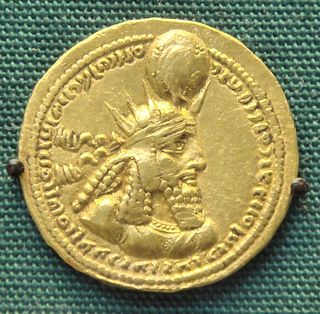273
► | قرن 2 | << قرن 3 >> | قرن 4 | ◄
► | عقد 240 | عقد 250 | عقد 260 | << عقد 270 >> | عقد 280 | عقد 290 | عقد 300 | ◄
► | ► | 268 | 269 | 270 | 271 | 272 | << 273 >> | 274 | 275 | 276 | 277 | 278 | ◄ | ◄
تحويل 1-1-273م الى هجري (وصلة خارجية) | تحويل 31-12-273م الى هجري (وصلة خارجية) | ابحث في الموسوعة عن مواضيع متعلقة بسنة 273
| ألفية: | الألفية 1 |
|---|---|
| قرون: | القرن 2 – القرن 3 – القرن 4 |
| عقود: | عقد 240 عقد 250 عقد 260 – عقد 270 – عقد 280 عقد 290 عقد 300 |
| سنين: | 270 271 272 – 273 – 274 275 276 |

| 273 حسب الموضوع | |
| السياسة | |
| زعماء الدول – الدول ذات السيادة | |
| تصنيفات المواليد والوفيات | |
| المواليد – الوفيات | |
| تصنيفات التأسيسات والانحلالات | |
| تأسيسات – انحلالات | |
| التقويم الگريگوري | 273 CCLXXIII |
| آب أوربه كونديتا | 1026 |
| التقويم الأرمني | N/A |
| التقويم الآشوري | 5023 |
| التقويم البهائي | −1571 – −1570 |
| التقويم البنغالي | −320 |
| التقويم الأمازيغي | 1223 |
| سنة العهد الإنگليزي | N/A |
| التقويم البوذي | 817 |
| التقويم البورمي | −365 |
| التقويم البيزنطي | 5781–5782 |
| التقويم الصيني | 壬辰年 (الماء التنين) 2969 أو 2909 — إلى — 癸巳年 (الماء الثعبان) 2970 أو 2910 |
| التقويم القبطي | −11 – −10 |
| التقويم الديسكوردي | 1439 |
| التقويم الإثيوپي | 265–266 |
| التقويم العبري | 4033–4034 |
| التقاويم الهندوسية | |
| - ڤيكرام سامڤات | 329–330 |
| - شاكا سامڤات | 195–196 |
| - كالي يوگا | 3374–3375 |
| تقويم الهولوسين | 10273 |
| تقويم الإگبو | −727 – −726 |
| التقويم الإيراني | 349 ق.ر. – 348 ق.ر. |
| التقويم الهجري | 360 ق.هـ. – 359 ق.هـ. |
| التقويم الياباني | N/A |
| تقويم جوچى | N/A |
| التقويم اليوليوسي | 273 CCLXXIII |
| التقويم الكوري | 2606 |
| تقويم مينگوو | 1639 قبل جمهورية الصين 民前1639年 |
| التقويم الشمسي التايلندي | 816 |
Year 273 (CCLXXIII) was a common year starting on Wednesday of the Julian calendar. At the time, it was known as the Year of the Consulship of Tacitus and Placidianus (or, less frequently, year 1026 Ab urbe condita). The denomination 273 for this year has been used since the early medieval period, when the Anno Domini calendar era became the prevalent method in Europe for naming years.[1] The year also saw most lost territories to rebellion returned to the Roman Empire by Emperor Aurelian.[2]
أحداث
حسب المكان
الإمبراطورية الرومانية
- Marcus Claudius Tacitus, future Roman Emperor, is consul in Rome.
- Emperor Aurelian defeats an incursion by the Carpi into Moesia and Thrace.
- Aurelian sacks the city of Palmyra, after putting down a second revolt.
- In bitter street-fighting, Aurelian crushes a rebellion in Alexandria by Firmus, a sympathizer of Palmyra. Firmus is strangled to death.
فارس
- King Hormizd I of Persia dies after a brief reign in which he has shown tolerance toward the ascetic, anti-materialist Manichean faith. He is succeeded by his brother Bahram I, who has been governing the province of Atropatene. Bahram proceeds to crush a rebellion by various vassal kings.
مواليد
وفيات
- 1 يونيو - Reverianus, Christian bishop
- Callinicus, Greek historian and sophist
- Cassius Longinus, Greek philosopher
- Dexippus، جنرال ومؤرخ يوناني
- Hormizd I, king of the Sassanid Empire
- Septimius Antiochus، غاصب للعرش الروماني
- Wei Zhao, Chinese historian and scholar (و. 204)
References
- ^ Moreton, Jennifer (March 2002). "Georges Declercq. Anno Domini: The Origins of the Christian Era. 206 pp., app., bibl.Turnhout, Belgium: Brepols Publishers, 2000. $35, €20". Isis. 93 (1): 105–106. doi:10.1086/343276. ISSN 0021-1753.
- ^ Schulman, Jeffrey E. (2017). "(A)rising in the East: The Case for a Palmyrene Sol Invictus". Plebeian. 3: 52–58.